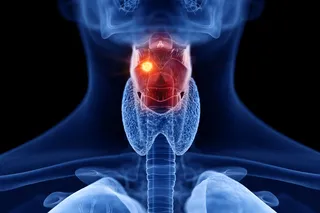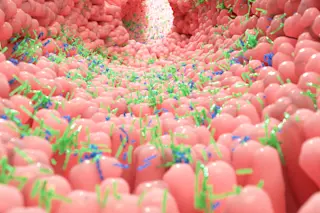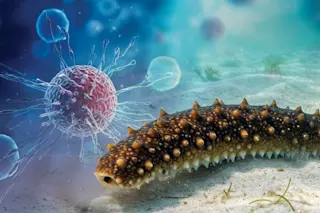In medical research, a tiny step backward could be a huge step forward. As unbelievable as it may sound, the process that grows a single cell into a person – and runs rampant in cancer – turns out to be reversible.
Medical researcher Gary Gorbsky and his colleagues at the Molecular, Cell and Developmental Biology Program at the Oklahoma Medical Research Foundation, found that using an experimental anti-cancer drug they were able to actually rewind the process of cell division. Cells that had already split in two could recombine. Seeing it actually happen blew Gorbsky away.
"I think most scientists spend long hours working in the lab and every once in a while they get to see something amazing that no one else in history has ever seen before," he says.
As Gorbsky explains, cell division usually only goes forward for a reason. "[Going backwards] is not something you normally want cells to do, so nature is set up to make the division process go in only one direction."
In fact, there is a whole complicated network of checkpoints in place to make sure that everything goes forward in exactly the right order – growing in size, copying the cell's DNA, and finally going through cell division. The 2001 Nobel Prize in Medicine was shared by Leland Hartwell, Paul Nurse, and Timothy Hunt for their work identifying the molecular mechanisms that regulate this programmed cell cycle.
Gorbsky says that understanding the process of normal cell division is critical to understanding what happens when the process goes wrong, like it does in cancer. He explains, "One of the hallmarks of cancer is uncontrolled cell division. Cells, cancer cells have lost the ability to control their normal cell division cycle."
Showing that the cell cycle can actually be reversed is a completely unexpected finding that Gorbsky says has contributed to our basic understanding of how cells work.
As his team and their collaborators at the University of Virginia Medical School wrote in the journal Nature, they added an experimental cancer drug called flavopiridol to cells that were frozen in the middle of cell division. Adding the drug to the cells tricked them into splitting in spite of the fact that they hadn't yet divided their DNA and weren't ready to. When the two new cells were almost completely split, they removed the drug.
"And the cell will reverse this process and go back to the point at which it started," Gorbsky says.
The cells actually completely rejoined, and were even able to continue with normal division a second time.
"It wasn't at all obvious before that, that when cells cleave themselves in half that if you did the right manipulation you get that process to reverse," Gorbsky says.
Getting that amount of precise control over cancer cells is likely a long way off, but this finding suggests that even that is theoretically possible. But Gorbsky says that cell division is such a fundamental and unique process of life that fully understanding it will have implications no one can even predict.
As he says, "We don't have anything else, none of our machines can do that, they can't reproduce themselves … it's just an amazing process."














